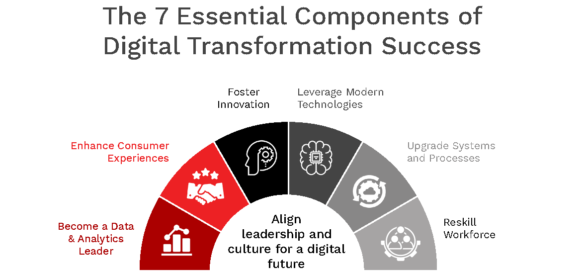Egregor Ransomware Adds to Data Leak Trend

As with other ransomware gangs, such as Maze and Sodinokibi, the operators
behind the Egregor ransomware are threatening to leak victims' data if the
ransom demands are not met within three days, according to an Appgate alert.
The cybercriminals linked to Egregor are also taking a page from the Maze
playbook, creating a "news" site on the darknet that offers a list of victims
that have been targeted and updates about when stolen and encrypted data will
be released, according to the alert. "Egregors' ransom note also says that
aside from decrypting all the files in the event the company pays the ransom,
they will also provide recommendations for securing the company's network,
'helping' them to avoid being breached again, acting as some sort of "black
hat pentest team," according to Appgate. It's not clear how much ransom the
operators behind Egregor are demanding or if any data has been leaked,
according to Appgate. A copy of one ransom note posted online notes the
cybercriminals plan to release stolen data through what they call "mass
media." While Appgate released an alert to customers on Friday, the Egregor
ransomware variant was first spotted in mid-September by several independent
security researchers, including Michael Gillespie, who posted samples of the
ransom note on Twitter.
Five reasons why Scrum is not helping in getting twice the work done in half the time

Do you measure the velocity of the team? Do you calculate how long a person
was busy doing something? Do you measure estimated time for a task vs. actual
time spent? Or measuring things like defects per story, defect removal
efficiency and code coverage, etc. It is not that the above is harmful as long
it is used for the right purposes like velocity for forecasting and code
coverage for quality of code. But it makes more sense to measure time to
market, customer satisfaction, NPS, usages index, response time, and
innovation rate. If you were releasing once a year and now releasing every
quarter, you have already improved by 400%, but would you like to stick here?
Look at how much time your team takes from development to deployment in
production? ... We wanted people to reach faster by driving faster. We
taught them how to drive, manage traffic well, and put instructions
everywhere, but people are still not going above 40 KM an hour. Although it
has improved the overall time as there are fewer troubles while driving. When
checked, people complained about 20 years old car that they have been driving.
We have a similar story to our team.
How technology will shape the future of the workplace

Organisations often find it challenging to carry out business transformation
projects successfully — and shaping the future of the workplace is no
different. While there may be a willingness to change, there are many ways
that change projects become stuck in the mire, their momentum stalled by
hundreds of micro-actions taken (and not taken) throughout the organisation.
The pandemic changed things. Businesses have learned that a major change
project that would normally have taken six months to a year — such as enabling
everyone to work remotely — can be done much faster. Necessity is indeed the
mother of invention; innovation happens when people and organisations realise
they have to act fast to stay competitive. ... As virtual working becomes less
novel, more businesses will explore ways that they can support their employees
and keep the team working efficiently. We’ll also start to see a re-evaluation
of what working means. The days when it was defined by who sat at their desk
the longest had already started to wane before the pandemic hit. Now, with the
freedom to be creative that lockdown granted business leaders, companies are
starting to look beyond hours worked and things produced and towards the
quality of that work and the effect it has on the goals of the business.
Data Management skills

Nowadays, the digital transformation is actually about applying a data-driven
approach to every aspect of the business in an effort to create a competitive
advantage. That's why more and more companies want to build their own data
lake solutions. This trend is still continuing and those skills are still in
need. The most popular tools here are still HDFS for the on-prem solution and
cloud data storage solutions from AWS, GCP, and Azure. Aside from that, there
are also some data platforms that are trying to fill several niches and create
integrated solutions, for example, Cloudera, Apache Hudi, Delta Lake. ...
There are Data Warehouses where the information is sorted, ordered, and
presented in the form of final conclusions(the rest is discarded), and Data
Lakes — "dump everything here, because you never know what will be useful".
Data Hub is focused on those who do not belong to either the first or the
second category. The Data Hub architecture allows you to leave your data where
it is, providing centralization of the processing but not the storage. The
data is searched and accessed right where it is located at the moment. But,
because the Data Hub is planned and managed, organizations must invest
significant time and energy determining what their data means, where it comes
from and what transformations it must complete before it can be put into the
Data Hub.
These 10 tech predictions could mean huge changes ahead

According to Ashenden, the need to support creativity and innovation is urgent
for businesses in the current context. As a result, the tools that enable
collaboration are getting a huge boost – and not a short-term one. "Those
areas will become much more central going forward," she said. "A lot of work
processes that once relied on face-to-face have gone digital now, and that
won't go back. Even when people are back in the office – once these things
live in a digital world, that's where they live." Connectivity, according to
CCS Insights, will also change as a result of the switch to remote work. From
next year, the firm expects network operators to offer dedicated "work from
home" packages to businesses, differentiating between corporate and personal
usage, so that employers can provide staff with appropriate services such as
security, collaboration tools and IT support. Operators will also increase
their focus on connectivity in suburban zones, rather than city centers, as
the workforce becomes increasingly established outside of the office. And as
connectivity becomes ever-more important, the research firm predicts that the
next three years will be rocked by governments' actions to better protect
their national telecom infrastructure.
Improving Webassembly and Its Tooling -- Q&A with Wasmtime’s Nick Fitzgerald
It’s about discovering otherwise hidden and hard-to-find bugs. There’s a ton
that we miss with basic unit testing, where we write out some fixed set of
inputs and assert that our program produces the expected output. We overlook
some code paths or we fail to exercise certain program states. The reliability
of our software suffers. We are fallible, but at least we can recognize our
limitations and compensate for them. Testing pseudo-random inputs helps us avoid
our own biases by feeding our system “unexpected” inputs. It helps us find
integer overflow bugs or pathological inputs that allow (untrusted and
potentially hostile) users to trigger out-of-memory bugs or timeouts that could
be leveraged as part of a denial of service attack. Some people are familiar
with testing pseudo-random inputs via “property-based testing” where you assert
that some property always holds and then the testing framework tries to find
inputs where your invariant is violated. For example, if you are implementing
the reverse method for an array, you might assert the property that reversing an
array twice is identical to the original array.
7 Essentials of Digital Transformation Success

Consumers have come to expect organizations to use their personal
information to create custom solutions. Especially during the pandemic,
consumers have become accustomed to the benefits of Netflix and Spotify
using machine learning for entertainment recommendations, Zoom using just a
couple clicks to create video engagement, and Google Home or Amazon Alexa
using voice for everything from answering inquiries to simplifying shopping.
These same consumers expect their bank or credit union to use their
relationship date, behaviors and preferences the same way … or better. But,
advanced analytics and AI should not be a goal in and of itself. These tools
should be used to support broader strategies. According to Wharton, “Instead
of exhaustively looking for all the areas AI could fit in, a better approach
would be for companies to analyze existing goals and challenges with a close
eye for the problems that AI is uniquely equipped to solve.” Some solutions
include everything from fraud detection to facilitating predictive solution
recommendations for customers. Now more than ever, AI needs to be used to
deliver human-like intelligence across the entire organization.
Inadequate skills and employee burnout are the biggest barriers to digital transformation

The ongoing disruption of the pandemic has shown how important it can be for
businesses to be built for change. Many executives are facing demand
fluctuations, new challenges to support employees working remotely and
requirements to cut costs. In addition, the study reveals that the majority
of organizations are making permanent changes to their organizational
strategy. For instance, 94% of executives surveyed plan to participate in
platform-based business models by 2022, and many reported they will increase
participation in ecosystems and partner networks. Executing these new
strategies may require a more scalable and flexible IT infrastructure.
Executives are already anticipating this: the survey showed respondents plan
a 20 percentage point increase in prioritization of cloud technology in the
next two years. What’s more, executives surveyed plan to move more of their
business functions to the cloud over the next two years, with customer
engagement and marketing being the top two cloudified functions. COVID-19
has disrupted critical workflows and processes at the heart of many
organizations’ core operations. Technologies like AI, automation and
cybersecurity that could help make workflows more intelligent, responsive
and secure are increasing in priority across the board for responding global
executives.
Is Cloud Migration a Path to Carbon Footprint Reduction?

Energy efficiency with an enterprise may go hand in hand with other
organizational traits, according to the report. Accenture’s research from
2013 to 2019 found that companies that consistently earned high marks on
environmental, social, and governance performance also saw operating margins
4.7x higher than organizations with lower performance in those areas. There
were also indications of higher annual returns to shareholders among those
environmentally minded enterprises. In addition to the potential benefit
cloud migration presents for the environment, Accenture’s report shows there
can be total cost of ownership savings of up to 30-40% when organizations
migrate to more cost-efficient public clouds. The report also shed light on
how cloud migration affected Accenture’s expenses. The firm runs 95% of its
applications in the cloud, the report says. After its third year of
migration, Accenture saw $14.5 million in benefits, plus another $3 million
in annualized costs saved by right sizing its service consumption. Moving to
the cloud might not mean much in terms of cutting energy consumption if the
service provider does not take steps to be more energy efficient.
Neuromorphic computing could solve the tech industry's looming crisis
Rather than separate out the memory and computing like most chips in use
today, neuromorphic hardware keeps both together, with processors having their
own local memory -- a more brain-like arrangement -- that saves energy and
speeds up processing. Neuromorphic computing could also help spawn a new wave
of artificial intelligence (AI) applications. Current AI is usually narrow and
developed by learning from stored data, developing and refining algorithms
until they reliably match a particular outcome. Using neuromorphic tech's
brain-like strategies, however, could allow AI to take on new tasks. Because
neuromorphic systems can work like the human brain -- able to cope with
uncertainty, adapt, and use messy, confusing data from the real world -- it
could lay the foundations for AIs to become more general. "The more brain-like
workloads approximate computing, where there's more fuzzy associations that
are in play -- this rapid adaptive behaviour of learning and self modifying
the programme, so to speak. These are types of functions that conventional
computing is not so efficient at and so we were looking for new architectures
that can provide breakthroughs," says Mike Davies
Quote for the day:
"It's not the position that makes the leader. It's the leader that makes the position." -- Stanley Huffty
No comments:
Post a Comment